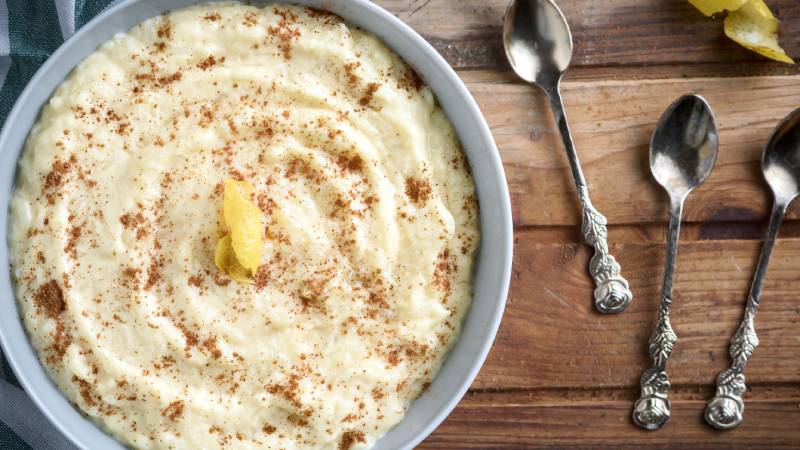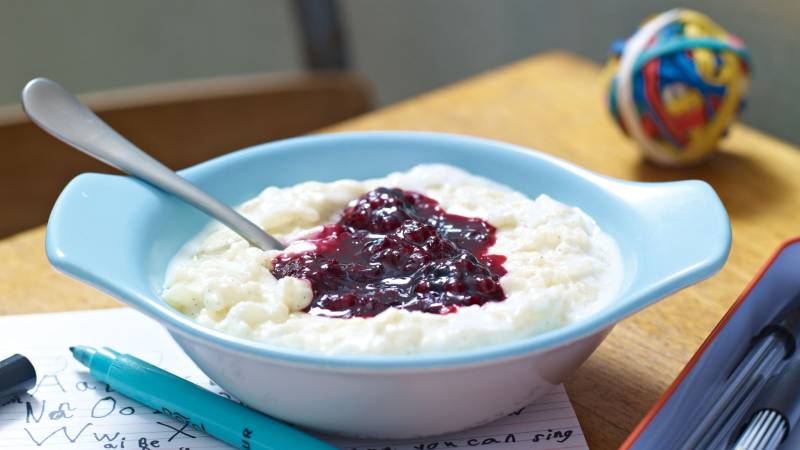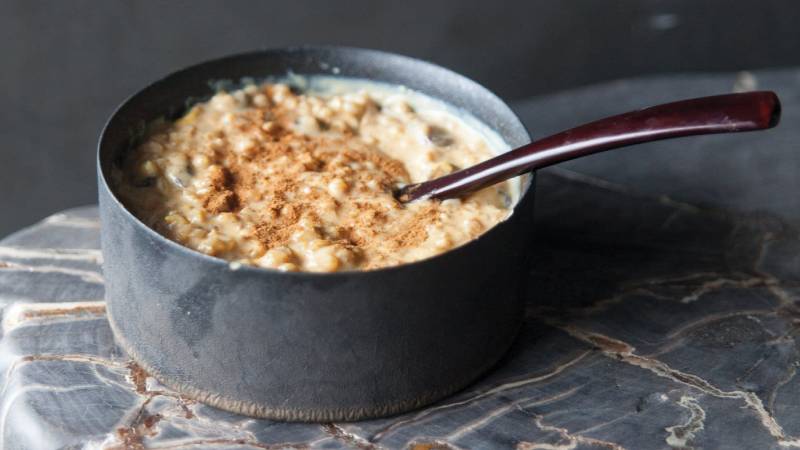Making rice pudding can be very easy but many people think that making it is hard because of the ways it looks like. All you have to do is gather your ingredients and follow the instructions for a delicious dessert!
See Also:
What Is Rice Pudding?
Rice pudding is a dish made from cooked rice and sweetened milk. You can make it by cooking the rice first, then adding the milk to establish flavor. Alternately, you may use leftover rice if desired.

The Core Rice Pudding Ingredients
Here are the 5 main ingredients that you need for rice pudding:
- Rice: The rice component of this pudding is the part that takes the most effort, where you have two options. You can either start with raw white or brown rice and cook it using a ratio of 2 cups water per cup of dried uncooked rice (say, eight cups water for four cooked cups of long-grain white).
- Milk: Making rice pudding can be easy with different types of milk. Known for its creamy texture, whole milk will give you the best results. But if you are vegan or lactose intolerant, use unsweetened non-dairy milk like almond, cashew, or oat milk instead. You can even try canned coconut milk, but it will alter the flavor of your rice pudding.
- Sugar: Start with 1/3 cup granulated sugar and add more at the end if you prefer a sweeter taste. Feel free to experiment with different sugars or liquid sweeteners, but start with a few tablespoons adding more to taste.
- Salt: Just a heaping teaspoon of salt adds an elegant flavor to your rice pudding, so don’t skip it.
- Vanilla: For a hemp milk version, stir in two tablespoons of tahini or cashew butter at the end.
Rice pudding can be stirred with your favorite warm spices or dried fruit. So feel free to experiment and play around with what tastes good to you.
Making Rice Pudding Can Be Very Easy
Cooking rice pudding is as easy as putting all the ingredients into a saucepan and simmering until the mixture thickens up.
It’s important to stir your rice pudding occasionally, otherwise, the bottom can burn. Some people add egg yolks for richness but this requires more care and a greater risk of scrambling the eggs.
To make this rice pudding extra rich, stir in a tablespoon of unsalted butter at the end. I think it takes the rice pudding up another level and my daughter happily agreed as she asked for seconds.

How To Serve Rice Pudding
Rice pudding can be served at any temperature like straight from the pot, heated, or when cold. Start with a grainy texture and thicken it to your liking by adding more milk so that it’s spoonable again.
Some Other Related Questions
Is rice pudding better hot or cold?
The following recipe for Rice Pudding is one of our favorite desserts. It’s a simple way to warm up chilly winter days and cool summer evenings, mildly spiced with just some cinnamon and nutmeg.
What Rice is best for rice pudding?
Rice pudding can be made in many different ways, and no matter what type of rice is used, the consistency should be creamy.
How healthy is rice pudding?
You’ve got to love that it’s made from simple ingredients like rice, milk, Making rice pudding sugar and eggs is. easy While, this and can is a be dessert, made from simple it does ingredients offer like milk some nutritional, eggs, sugar benefits, including almost 10 grams of protein and 15 and rice. Rice pudding has nutritional benefits too – it offers a percent of the daily recommendation for protein (nine grams per bone-building calcium cup) and per cup of calcium (15. percent of the daily recommendation).
Conclusion
A bowl of warm, sweet rice pudding should be the top priority in your follow-up grocery shopping list. The dish’s simple to make and a variation can be found using almost any kind of fruit you have on hand. The article above shows you how to make the easiest rice pudding, one that you’ll use over and over again.

I am Paula D. Gonzales. As a Product Designer, I have worked with companies like AMC Culinary Cookware, counting over 6 years of professional experience in the cookwares field.
In this blog, I will review various cookware products such as cookware benefits, non-stick safety, healthy cookware, taste, durability, PFOA free, and induction cookware. My goal is to build a rigorous evaluation of various cookware products so that you and I can better understand the differences in the products and their relative benefits.
